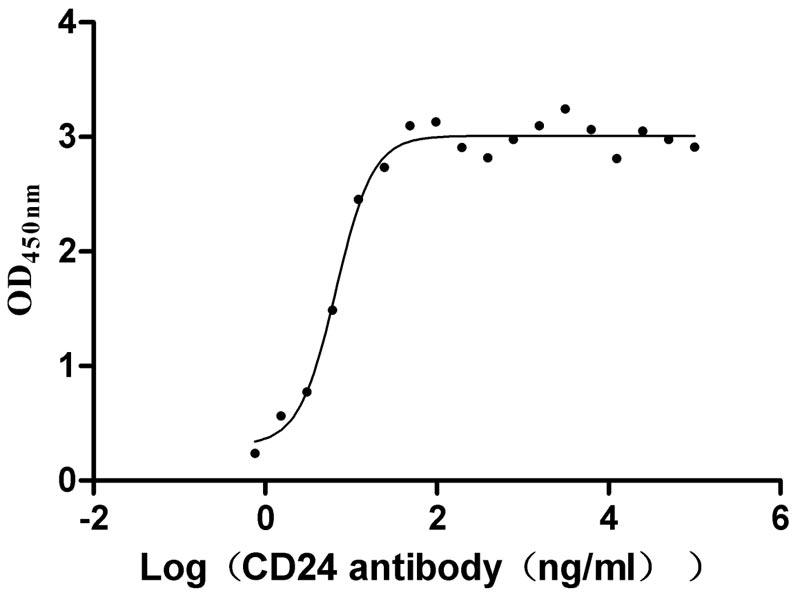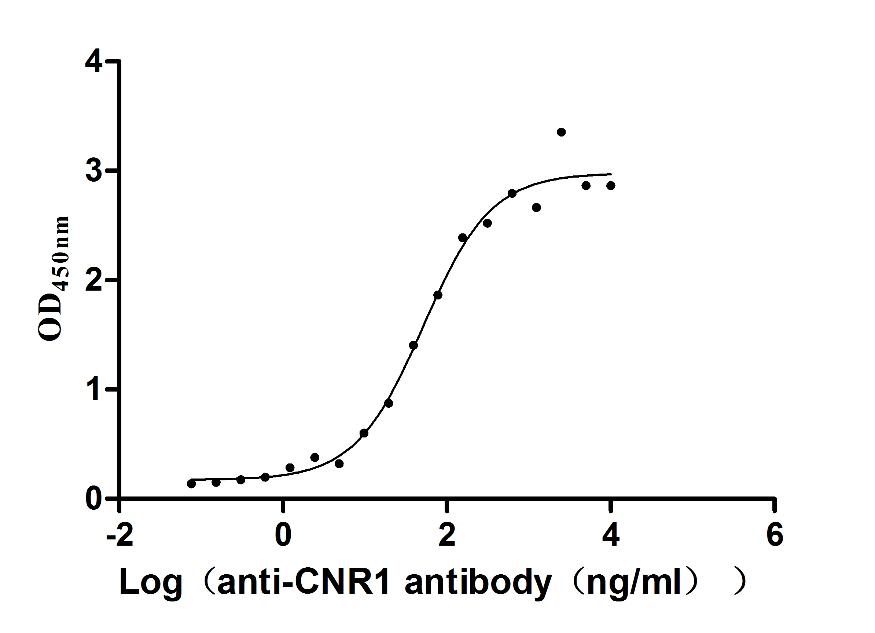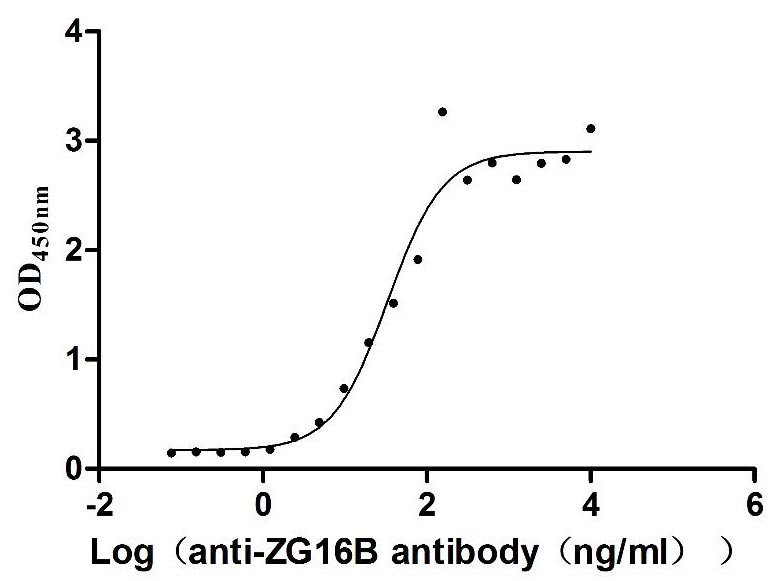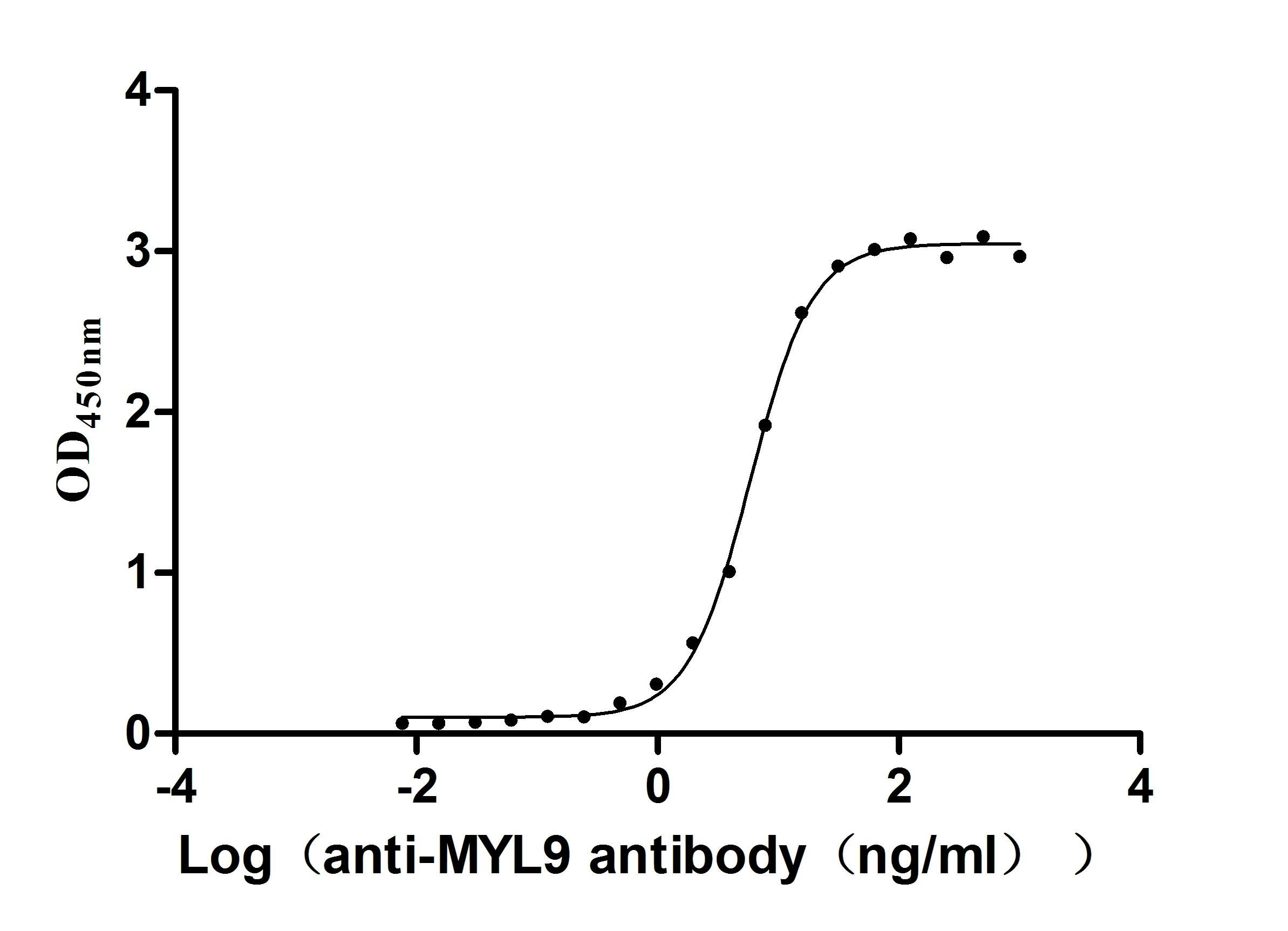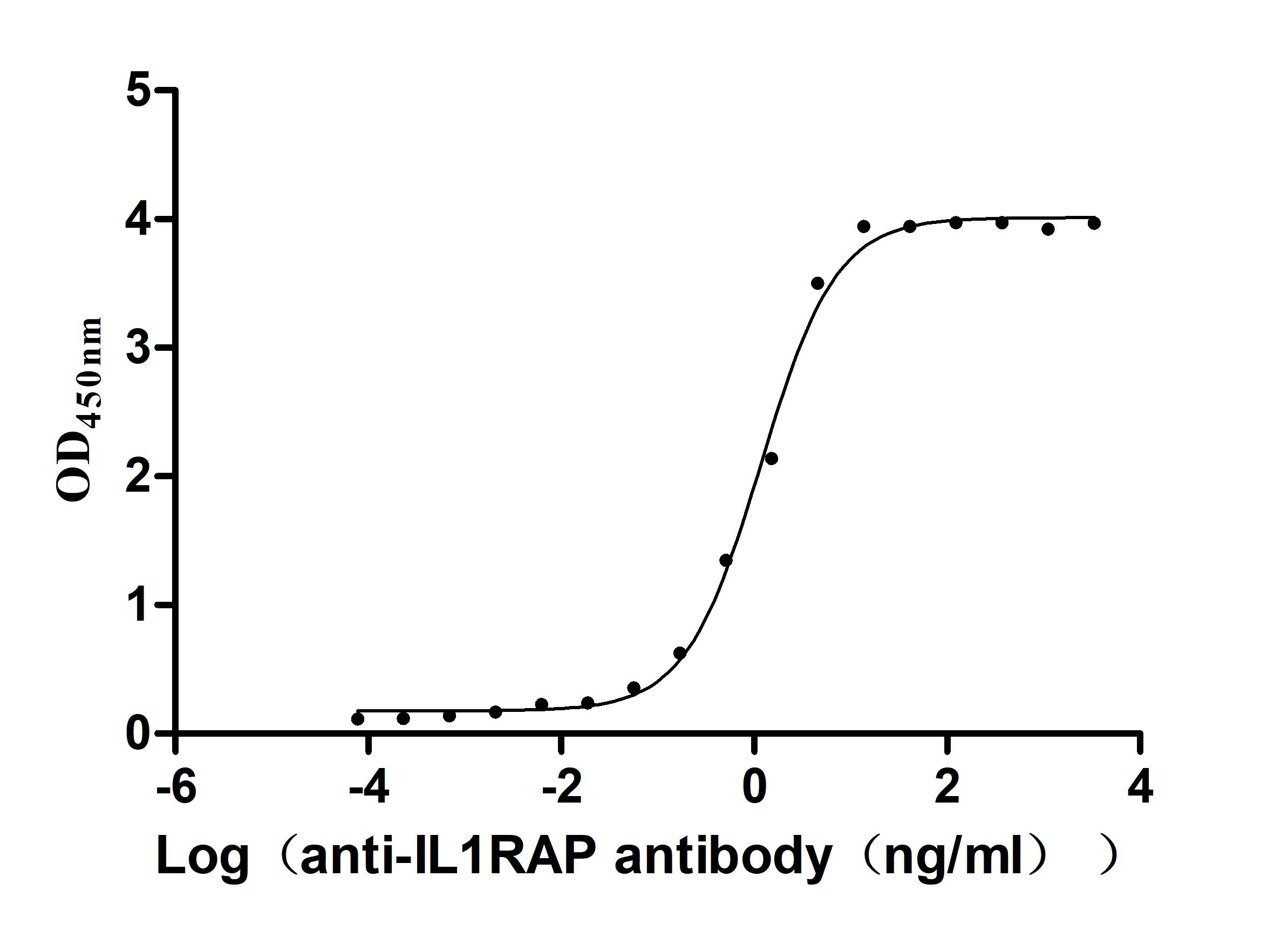Recombinant Mouse Sodium channel protein type 8 subunit alpha (Scn8a), partial
-
中文名稱:小鼠Scn8a重組蛋白
-
貨號(hào):CSB-YP896232MO
-
規(guī)格:
-
來(lái)源:Yeast
-
其他:
-
中文名稱:小鼠Scn8a重組蛋白
-
貨號(hào):CSB-EP896232MO
-
規(guī)格:
-
來(lái)源:E.coli
-
其他:
-
中文名稱:小鼠Scn8a重組蛋白
-
貨號(hào):CSB-EP896232MO-B
-
規(guī)格:
-
來(lái)源:E.coli
-
共軛:Avi-tag Biotinylated
E. coli biotin ligase (BirA) is highly specific in covalently attaching biotin to the 15 amino acid AviTag peptide. This recombinant protein was biotinylated in vivo by AviTag-BirA technology, which method is BriA catalyzes amide linkage between the biotin and the specific lysine of the AviTag.
-
其他:
-
中文名稱:小鼠Scn8a重組蛋白
-
貨號(hào):CSB-BP896232MO
-
規(guī)格:
-
來(lái)源:Baculovirus
-
其他:
-
中文名稱:小鼠Scn8a重組蛋白
-
貨號(hào):CSB-MP896232MO
-
規(guī)格:
-
來(lái)源:Mammalian cell
-
其他:
產(chǎn)品詳情
-
純度:>85% (SDS-PAGE)
-
基因名:
-
Uniprot No.:
-
別名:Scn8a; Nbna1; Sodium channel protein type 8 subunit alpha; Sodium channel protein type VIII subunit alpha; Voltage-gated sodium channel subunit alpha Nav1.6
-
種屬:Mus musculus (Mouse)
-
蛋白長(zhǎng)度:Partial
-
蛋白標(biāo)簽:Tag?type?will?be?determined?during?the?manufacturing?process.
The tag type will be determined during production process. If you have specified tag type, please tell us and we will develop the specified tag preferentially. -
產(chǎn)品提供形式:Lyophilized powder
Note: We will preferentially ship the format that we have in stock, however, if you have any special requirement for the format, please remark your requirement when placing the order, we will prepare according to your demand. -
復(fù)溶:We recommend that this vial be briefly centrifuged prior to opening to bring the contents to the bottom. Please reconstitute protein in deionized sterile water to a concentration of 0.1-1.0 mg/mL.We recommend to add 5-50% of glycerol (final concentration) and aliquot for long-term storage at -20℃/-80℃. Our default final concentration of glycerol is 50%. Customers could use it as reference.
-
儲(chǔ)存條件:Store at -20°C/-80°C upon receipt, aliquoting is necessary for mutiple use. Avoid repeated freeze-thaw cycles.
-
保質(zhì)期:The shelf life is related to many factors, storage state, buffer ingredients, storage temperature and the stability of the protein itself.
Generally, the shelf life of liquid form is 6 months at -20°C/-80°C. The shelf life of lyophilized form is 12 months at -20°C/-80°C. -
貨期:Delivery time may differ from different purchasing way or location, please kindly consult your local distributors for specific delivery time.Note: All of our proteins are default shipped with normal blue ice packs, if you request to ship with dry ice, please communicate with us in advance and extra fees will be charged.
-
注意事項(xiàng):Repeated freezing and thawing is not recommended. Store working aliquots at 4°C for up to one week.
-
Datasheet :Please contact us to get it.
靶點(diǎn)詳情
-
功能:Mediates the voltage-dependent sodium ion permeability of excitable membranes. Assuming opened or closed conformations in response to the voltage difference across the membrane, the protein forms a sodium-selective channel through which Na(+) ions may pass in accordance with their electrochemical gradient. In macrophages, isoform 5 may participate in the control of podosome and invadopodia formation.
-
基因功能參考文獻(xiàn):
- we demonstrated that a selective reduction in Scn8a can dramatically protect against the development of spontaneous seizures, hyperactivity, and reactive gliosis in a mouse model of MTLE. PMID: 29317669
- in the absence of Nav1.6 expression, the AIS is occupied by Nav1.2 channels. However, APs are generated in the AIS, and differences in AP propagation to soma and dendrites are minimal. PMID: 29991598
- Therefore, APP modulates Nav1.6 sodium channels through a Go-coupled JNK pathway, which is dependent on phosphorylation of APP at Thr668. PMID: 28008944
- The results demonstrate that Scn8a plays a vital role in neuronal excitability and provide insight into the mechanism and future treatment of epileptogenesis in early infantile epileptic encephalopathy. PMID: 28193882
- Nav1.6 expression at mRNA levels in ischemic and contralateral hemispheres of middle cerebral artery occlusion (MCAO) rats were persistently decreased after reperfusion compared to sham-operated rat, but a prominent, dynamic increase of Nav1.6 immunoreactivity in reactive astrocytes was observed in the genu of corpus callosum in the acute phase. Upregulation of Nav1.6 expression strongly correlated with astrogliosis. PMID: 28434994
- Differential distribution in primary sensory endings suggests specialized roles for these three NaV isoforms in the process of mechanosensory signaling by muscle spindles. PMID: 28123009
- that loss of Scn8a leads to altered thalamic reticular nucleus cell intrinsic excitability and a failure in recurrent RT synaptic inhibition PMID: 28238546
- The data of this study support the view that gain-of-function mutations of SCN8A lead to pathogenic alterations in brain function contributing to encephalopathy. PMID: 27836728
- The clinical phenotype of the severe hypomorphic sodium channel gene SCN8A mutant expands the spectrum of Scn8a disease to include a recessively inherited, chronic and progressive movement disorder. PMID: 26807988
- the presences of Nav1.1, Nav1.6, Navbeta1 and Navbeta3 mRNA and their reduced levels in rat SAN during aging. PMID: 26528804
- This study demonstrates that Nav channel expression in lumbar motoneurons is altered after SCI, and it shows a tight relationship between the calpain-dependent proteolysis of Nav1.6 channels, the upregulation of I(NaP) and spastici PMID: 26974309
- the role of Nav1.6 in general anesthesia using two mouse mutants with reduced activity of Nav1.6, was examined. PMID: 26252017
- observed increased hippocampal pyramidal cell excitability in heterozygous and homozygous Scn8a-R1627H mutants, and decreased interneuron excitability in heterozygous Scn8a-R1627H mutants. PMID: 26410685
- The data support a model where ankyrinG-binding is required for preferential Nav1.6 insertion into the axon initial segment plasma membrane during development. PMID: 25874799
- the degenerating muscle mutation is a loss of function mutation of scn8a PMID: 25380697
- N1768D mutation of SCN8A is sufficient to induce seizures and SUDEP in knock-in mice. PMID: 25227913
- APP enhances Nav1.6 sodium channel cell surface expression through a Go-coupled JNK pathway PMID: 25767117
- This study provided evidence for a direct link between sodium channel activity and modulation of Rac1 and ERK1/2 activation in ATP-stimulated microglia, possibly by regulating Ca(2+) transients PMID: 25043721
- results identify the hippocampus as an important structure in the mediation of Scn8a-dependent seizure protection and suggest that selective targeting of Scn8a activity might be efficacious in patients with epilepsy. PMID: 24704313
- identified the PI3K/Akt pathway, the cell-cycle regulator Wee1 kinase, and protein kinase C (PKC) as prospective regulatory nodes of neuronal excitability through modulation of the FGF14:Nav1.6 complex. PMID: 25659151
- In scn8a mutants, a 20-min acute restraint stress administered in the morning increases the frequency of spontaneous spike-wave discharges. Scn8a mutants also show increased anxiety-like behavior in mildly stressful situations. PMID: 24138934
- interaction with Sin3B influences Na(v)-channel trafficking or stability in the membrane. PMID: 24077057
- The crystal structure of apo-CaM:Na(V)1.6IQ motif, along with functional studies, are reported. PMID: 23942337
- The findings of this study provided behavioural evidence for a crucial role of Nav1.6 in multiple peripheral pain pathways including cold allodynia. PMID: 23711479
- Expression levels of brain Nav1.6 are increased in animals with autoimmune encephalomyelitis animals treated with sodium channel blockers. PMID: 23735284
- inhibition of GSK3 reduces the assembly of the FGF14.Nav channel complex, modifies FGF14-dependent regulation of Na(+) currents, and induces dissociation and subcellular redistribution of the native FGF14.Nav channel complex in hippocampal neurons. PMID: 23640885
- NaV1.6 directly binds to pumilio-2 protein and results in regulation of membrane excitability. PMID: 23739961
- Scn8a channel mediates esurgent-like currents in vas deferens myocytes. PMID: 22986623
- This study showed that type 2 diabetes induces significant and persistent increase of Nav1.6 expression in the DRG, which may participate in the diabetic neuropathic. PMID: 22075254
- Loss of Scn8a is associated with reduced Retinal Function. PMID: 22355369
- Na(V)1.6 participates in excitation contraction coupling, and represents an intrinsic depolarizing reserve that contributes to excitation. PMID: 21948246
- Voltage-gated sodium channel Nav1.6 mediates the hyperpolarizing threshold response of peripheral myelinated nerve fibers. PMID: 21295113
- The atrophic degeneration in some fore and hind limb muscles of dmu(Scn8a) mice may increase CGRP expression in their motoneurons. PMID: 21061159
- Nedd4-2 interacts with Na(v)1.6 via a Pro-Ser-Tyr(1945) motif in the C terminus of the channel and reduces Na(v)1.6 current density, and this regulation requires both the Pro-Gly-Ser-Pro motif in L1 and the Pro-Ser-Tyr motif in the C terminus PMID: 20530479
- the Scn8a voltage-gated sodium channel has a role insleep architecture, diurnal corticosterone levels, and spatial memory PMID: 20353942
- Nav1.6 channels at axon initial segments contribute to persistent Na(+) current and ensure a high degree of temporal precision in repetitive firing of cerebellar granule cells. PMID: 20173079
- Sodium currents in vas deferens myocytes were due to activation of NaV1.6 channels and the gating properties of these channels suggest that they have a role in regulating muscle excitability, particularly in response to rapid depolarizing stimuli. PMID: 20054822
- Complementation testing with a known Scn8a mouse mutant confirmed that this mutation is responsible for the Cloth-ears phenotype. Our findings suggest a novel role for Scn8a in peripheral neural hearing loss and paroxysmal motor dysfunction. PMID: 19737145
- med(J) mutation shows greatly reduced levels of Scn8a voltage-gated sodium channels, causing abnormal conduction of action potentials throughout the nervous system and accounting for absence of spontaneous bursting activity in the cochlear nucleus. PMID: 12204355
- Molecular and pathological effects of a modifier gene, Scnm1, on deficiency of the sodium channel Scn8a (Na(v)1.6), in genetic models of movement disorders. PMID: 12374766
- Development of closed-state inactivation was also much faster for Nav1.6 currents than for Nav1.7 currents. PMID: 12843211
- modifier mutation introduces a nonsense codon into SCNM1, a zinc finger protein and putative splice factor; the effect of the modifier mutation is to reduce the abundance of correctly spliced sodium channel transcripts below the threshold for survival PMID: 12920299
- FHF2B, a member of the FGF homologous factor (FHF) subfamily, is an interacting partner of Na(v)1.6. PMID: 15282281
- However, Na(v)1.2 channels show a greater accumulation of inactivation at higher frequencies of stimulation (20-100 Hz) than Na(v)1.6 and thus are likely to generate lower frequencies of firing. PMID: 15760941
- results demonstrate for the first time the intrinsic ability of Na(v)1.6 to produce a resurgent current, and also show that cell background is critical in permitting the generation of these currents PMID: 15811336
- Nav channels generate and regenerate action potentials at multiple sites along the cochlear ganglion cells and nerve fibers, including the afferent endings, ganglionic initial segments, and nodes of Ranvier PMID: 16033895
- Our data supports the hypothesis that the lack of expression of Nav1.6 in Schwann cells at neuromuscular junctions might play a role in the med phenotype. PMID: 16078241
- specialized kinetics of Purkinje Na channels depend directly on Scn8a expression PMID: 16687615
- Beta-scorpion toxin enhance channel activaton, which could make it a model drug to replace deep brain stimulation of the subthalamic nucleus in patients with Parkinson disease. PMID: 16702217
- Inactivation of sodium channel Scn8A (Na-sub(v)1.6) in Purkinje neurons impairs learning in Morris water maze and delay but not trace eyeblink classical conditioning. PMID: 16719687
顯示更多
收起更多
-
相關(guān)疾病:Defects in Scn8a are the cause of motor endplate disease (med). Med is a recessive neuromuscular disorder that is characterized by lack of signal transmission at the neuromuscular junction, excess preterminal arborization and degeneration of cerebellar Purkinje cells. It produces early onset progressive paralysis of hind limbs, severe muscle atrophy and juvenile lethality.; DISEASE: Note=Defects in Scn8a are the cause of the jolting mutant (medjo), a mild form of motor endplate disease which is characterized by the absence of spontaneous, regular, simple discharges from Purkinje cells. After 3 weeks of age, jolting mice are unsteady and have wide-based gait and a rhythmical tremor of head and neck induced by attempted movement.
-
亞細(xì)胞定位:Cell membrane; Multi-pass membrane protein. Cell projection, axon.
-
蛋白家族:Sodium channel (TC 1.A.1.10) family, Nav1.6/SCN8A subfamily
-
組織特異性:Expressed in the hippocampus (at protein level). Expressed in brain, cerebellum and spinal cord. Isoform 5: May be expressed in non-neuronal tissues, such as peritoneal macrophages.
-
數(shù)據(jù)庫(kù)鏈接:
Most popular with customers
-
Recombinant Human Signal transducer CD24 (CD24)-Nanoparticle (Active)
Express system: Mammalian cell
Species: Homo sapiens (Human)
-
Recombinant Mouse Tyrosine-protein kinase Mer (Mertk), partial (Active)
Express system: Mammalian cell
Species: Mus musculus (Mouse)
-
Recombinant Human Cannabinoid receptor 1 (CNR1)-VLPs (Active)
Express system: Mammalian cell
Species: Homo sapiens (Human)
-
Recombinant Human Pancreatic adenocarcinoma up-regulated factor (ZG16B) (Active)
Express system: Mammalian cell
Species: Homo sapiens (Human)
-
Recombinant Human Myosin regulatory light chain 12A (MYL12A) (Active)
Express system: E.coli
Species: Homo sapiens (Human)
-
Recombinant Macaca fascicularis Zinc transporter ZIP6 isoform X1(SLC39A6),partial (Active)
Express system: Baculovirus
Species: Macaca fascicularis (Crab-eating macaque) (Cynomolgus monkey)
-
Recombinant Human Interleukin-12 receptor subunit beta-1(IL12RB1),partial (Active)
Express system: Mammalian cell
Species: Homo sapiens (Human)
-
Recombinant Human Interleukin-1 receptor accessory protein (IL1RAP), partial (Active)
Express system: Mammalian cell
Species: Homo sapiens (Human)


